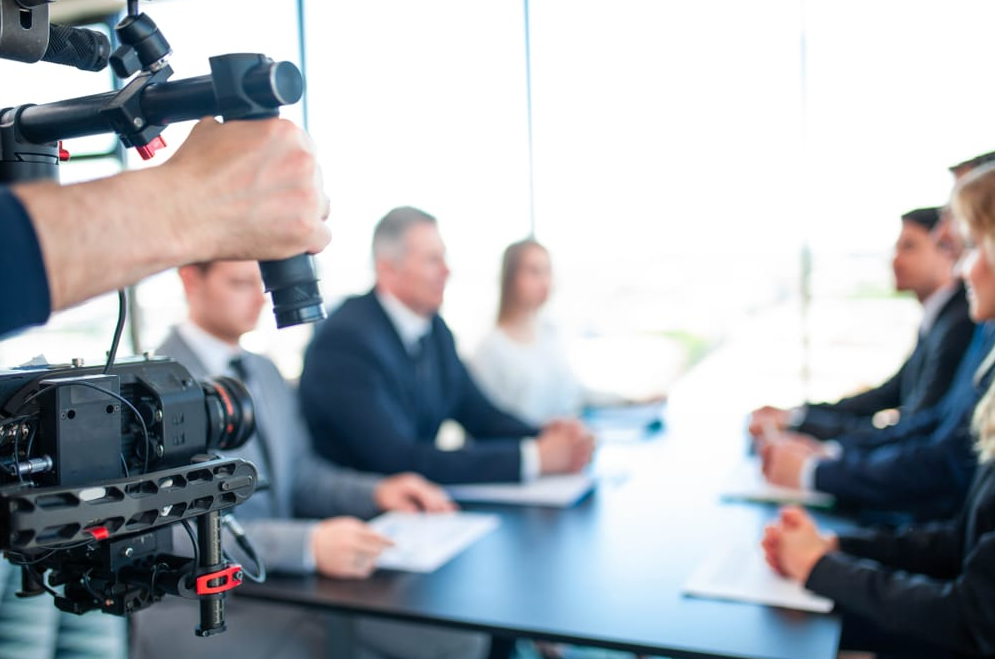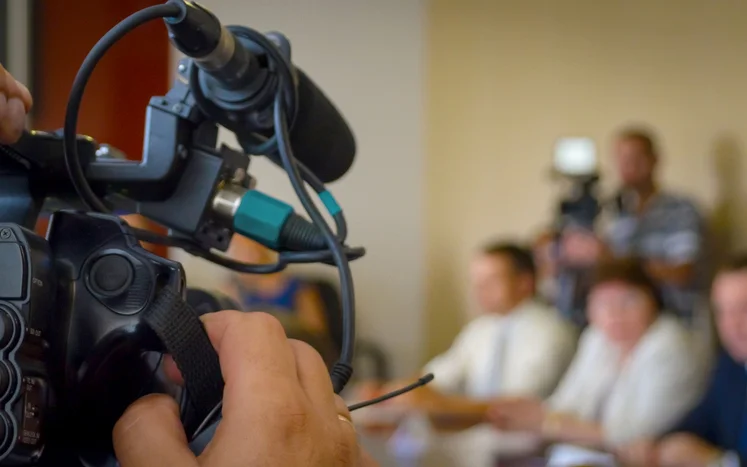The Ultimate Guide to Legal Videography for Attorneys and Legal Teams
The Ultimate Guide to Legal Videography for Attorneys and Legal Teams
Blog Article
Looking Into the Systems of Lawful Videography: Introduction Its Procedure in Shielding Authentic Visual Testimony for Judicial Proceedings
In the realm of judicial process, the duty of lawful videography stands as a foundation in protecting and presenting visual proof. As innovation continues to advancement, the devices behind legal videography have become significantly complex, using a critical layer of credibility to statements captured on video clip. By delving right into the functional complexities of lawful videography, one can discover the precise procedures that secure the stability of aesthetic evidence presented in courts - Legal Videography. This exploration not just clarifies the historical development of legal videography yet likewise means the future patterns that might additionally transform just how visual testaments are supported in the realm of justice.
Historical Advancement of Legal Videography
Taking a look at the historic progression of legal videography discloses a significant improvement in the recording and discussion of visual evidence within the lawful landscape. In the past, lawful process heavily counted on created photos and records to record occasions and provide evidence. With the advent of video technology, the legal market saw a standard change in just how aesthetic testament was recorded and presented.
The advancement of legal videography can be mapped back to the late 20th century when developments in video clip recording equipment made it much more easily accessible for usage in courts. This technical improvement not only improved the accuracy and reliability of visual evidence yet additionally revolutionized the means instances were offered to courts and courts (Legal Videography). Attorneys started to identify the persuasive power of video recordings in conveying feelings, subtleties, and non-verbal hints that composed transcripts or pictures alone could not capture properly

Technology Advancements in Video Clip Documents
What essential technological innovations have revolutionized video documentation in the legal area? The lawful area has actually seen considerable advancements in video paperwork innovation that have enhanced the credibility and dependability of visual evidence in judicial process. One of the essential advancements is high-def (HD) video clip recording capabilities, which provide crystal-clear pictures and sharp information that are critical for precisely capturing testimonies, faces, and other visual signs. Furthermore, the integration of timestamping and metadata attributes in video documents devices has made it possible for exact paperwork of when and where the video was videotaped, making sure the integrity of the proof presented in court.
Moreover, developments in video security and watermarking technologies have actually bolstered the safety and tamper-proof nature of video clip evidence, securing it versus unauthorized modifications or meddling. Furthermore, the development of cloud storage space solutions and remote gain access to capacities has structured the storage, retrieval, and sharing of video clip evidence, assisting in smooth collaboration among attorneys and making certain efficient access to important aesthetic testimonies when needed. These technological developments in video documentation have unquestionably reinvented the lawful field, improving the find out accuracy, reliability, and admissibility of visual evidence in judicial proceedings.
Duty of Lawful Videographers in Court Room Setups
The evolution of video clip paperwork innovation in the lawful field has actually demanded a crucial role for lawful videographers in court room setups, making sure the integrity and reliability of visual testimonies provided throughout judicial process. Legal videographers play a fundamental function in capturing and maintaining precise aesthetic proof that can be pivotal in litigation. Their obligation includes establishing up equipment, videotaping procedures, and generating high-grade videos that properly reflect the occasions in the courtroom.
In court room settings, lawful videographers must stick to strict standards and standards to keep the authenticity of the visual document. They should have a keen eye for detail and a thorough understanding of legal treatments to ensure that the video footage they record is a true depiction of the occasions that transpired. Furthermore, lawful videographers frequently function very closely with legal teams to make sure that the video clip evidence lines up with the situation's needs and can be efficiently provided in court to sustain the lawful disagreements being made. In general, the duty of legal videographers in court settings is vital in supporting the concepts of justice and making certain the transparency of legal procedures.

Ensuring Admissibility and Stability of Video Clip Evidence
To preserve the reputation of visual evidence provided in lawful proceedings, guaranteeing the admissibility and honesty of video clip evidence is a vital duty for lawful videographers. Admissibility describes the acceptance of evidence by the court, and for video evidence to be acceptable, it has to meet certain requirements. Lawful videographers play a critical duty in ensuring that the videos they catch adhere to the rules of evidence, such as relevance, authenticity, and dependability.
Integrity of video clip proof involves keeping the creativity and precision of the video footage from the moment it is tape-recorded till it is presented in court. This consists of firmly keeping the video data, documenting the chain of wardship, and protecting against any kind of meddling or modifications. Legal videographers should follow strict methods to assure the stability of the video proof and stop any type of difficulties to its authenticity.
Future Trends in Legal Videography
Offered the boosting reliance on technology in lawful procedures, legal videographers are positioned to accept innovative advancements forming the future of visual testament capture and discussion. One of the noticeable patterns imminent is the assimilation of online reality (VIRTUAL REALITY) and enhanced fact (AR) innovations into lawful videography. These technologies have the possible to transform how aesthetic evidence is offered in courtrooms, permitting juries and courts to immerse themselves in the scene of the criminal activity you can try these out or event.
Additionally, using expert system (AI) formulas for video evaluation is anticipated to improve the procedure of examining and examining large quantities of video clip footage. AI can help in recognizing essential minutes, anomalies, and patterns within videos, boosting the efficiency of lawful examinations.

Final Thought
Finally, lawful videography has actually played a vital role in supplying authentic visual proof for judicial procedures. Via technological improvements and the knowledge of lawful videographers, the integrity and admissibility of video clip proof are made sure in court room settings. As legal videography proceeds to evolve, it will certainly be important to maintain criteria that maintain the accuracy and dependability of aesthetic testimony for the future of legal procedures.
Checking out the historical progression of lawful videography discloses a substantial change in the recording and discussion of aesthetic proof within the lawful landscape.The advancement of video paperwork technology in the lawful area has actually necessitated a vital check out this site role for lawful videographers in court setups, making sure the honesty and integrity of aesthetic testaments provided throughout judicial process. Additionally, legal videographers typically function very closely with legal groups to make certain that the video clip proof aligns with the case's demands and can be effectively provided in court to support the legal arguments being made.To maintain the credibility of visual evidence offered in lawful process, making certain the admissibility and honesty of video clip proof is an important duty for lawful videographers. As legal videography continues to develop, it will be essential to copyright standards that keep the precision and dependability of visual testimony for the future of lawful process.
Report this page